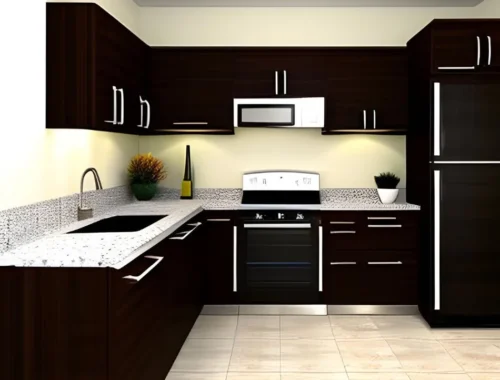
Apple homekit
Table of Contents : Make your reading easy
ToggleIf you’re new to smart home gadgets, their functionality, and their advantages, the HomeKit ecosystem may appear intimidating and perplexing, but getting started is actually simple and clear. Learning the ins and outs of apple HomeKit after installation takes some time, but it’s not a difficult process, and having interconnected products that can interact with one another and be automated may save time and truly streamline your life.
What is Apple HomeKit?
Apple HomeKit is a platform that allows you to control your home’s smart devices using your iPhone or iPad. With HomeKit, you can use Siri to control your lights, door locks, thermostats, and more. You can also create automation to make your life easier, such as turning on the lights when you get home from work. It is a great way to make your home more convenient and secure.
HomeKit isn’t as widely supported as Google Assistant or Amazon’s Alexa, but that number is growing by the day. HomeKit is an easy starting point for Apple lovers who are just starting to set up their smart homes, with a solid base of compatible locks, lights, outlets, and more.
How does HomeKit work?
Apple’s HomeKit is a home automation platform that lets users control their smart home devices using their iPhones or iPad. HomeKit devices can be controlled using Siri voice commands and can be automated using the Apple Home app.
HomeKit devices communicate with each other using a secure wireless protocol called Zigbee. Zigbee is a mesh network protocol that allows devices to communicate with each other even if they’re not in direct range of each other.
HomeKit devices can be controlled remotely using the Apple Home app or using Siri voice commands. Siri can be used to control devices, set up scenes, and more.
The Apple Home app is used to set up and manage HomeKit devices. The app can be used to add new devices, create rooms and zones, and set up automation.
What can you do with Apple HomeKit?
If you’ve ever wanted to control your home with your voice or automate your home’s lighting, security, and more, then you’ll want to check out Apple HomeKit. HomeKit is Apple’s framework for home automation, and with it, you can control all of your compatible smart home devices with just your voice, or the Home app on your iPhone, iPad, or Mac.
So what can you do with Apple HomeKit? Well, here are just a few examples:
- You can use Siri to control your home’s lights, or even turn on your air conditioner before you get home.
- You can set up scenes to automatically turn on or off multiple devices at once. For example, you could create a “Goodnight” scene that turns off your lights and locks your doors.
- You can use the Home app to see a live view of your home’s security cameras or even control your garage door.
Using the Apple Home app
When HomeKit originally debuted, there was no app; instead, you had to utilise third-party manufacturers’ applications to configure each device. Apple quickly saw the error of its ways, though, and introduced a single app to govern them all.
The Home app also allows you to interact with your gadgets in three ways. There’s ‘Home,’ which displays all of your favourite devices and ‘Scenes,’ ‘Rooms,’ which organises devices based on which room they’re in, and ‘Automation,’ which lets you automate how your smart home responds to events. For example, you may have the lights turned off when you leave the house or have the front door locked at night.
You can also use the app to enable notifications for any doors, locks, and sensors in your HomeKit house, acting as a de facto security system. You can also use the app to add accessories and set up scenarios and automation.
If you don’t like the Home app, you can replace it with third-party apps. Eve’s is excellent, Fibaro has one, and there are other premium choices in the app store. These have the advantage of giving you greater control over certain of your Home devices, but they are also more sophisticated than the Home app.
Creating Scenes and Automations
One of the coolest features of the Apple Home app is the ability to create “Scenes,” which are essentially groups of devices that can be managed all at once (think “bedtime” or “movie mode”). Scenes may be activated with Siri, by touch in the app on your phone or watch, or by triggering another device, such as a smart home button.
Select Add Scene from the + sign in the top-right corner. Now tap Add Accessories to choose the devices you wish to manage, then name the Scene before hitting Done.
Similarly, “Automations” also enable you to automate the behaviour of a number of connected devices based on parameters such as time of day, location (based on your iPhone’s home / away state), when a sensor detects anything (motion or smoke), and/or when another device is controlled (such as a door locked). The distinction between Scenes and Automations is that Scenes must be triggered by voice or touch, whereas Automations occur automatically.
Automations, with one exception, can also trigger Scenes. So you can programme your “Good Night” scenario to turn off the smart lights, lower the thermostat, and lock the doors at 10:30 p.m. every night.
Controlling Your HomeKit Devices
The amazing thing about HomeKit is the variety of ways you can control your HomeKit-enabled gadgets.
Siri voice commands on the iPhone, iPad, iPod touch, Mac, Apple Watch, HomePod, or Apple TV may be used to ask Siri to do HomeKit operations.
Devices may be manually controlled through the Home app or the app that came with the device. Each HomeKit gadget will have a control app available for download from the iOS App Store.
You may also buy HomeKit-enabled button-type devices that work as remotes to physically activate HomeKit scenes, as well as switches for controlling HomeKit items like lighting.
Examples of Siri HomeKit commands
Siri is Apple’s virtual assistant, and HomeKit is Apple’s platform for controlling smart home devices. Here are some of the best Siri commands for controlling your smart home with HomeKit.
1. To turn on a light:
- “Siri, turn on the light.”
- “Siri, turn on the living room light.”
- “Siri, turn on the kitchen light.”
2. To turn off a light:
- “Siri, turn off the light.”
- “Siri, turn off the living room light.”
- “Siri, turn off the kitchen light.”
3. To dim a light:
- “Siri, dim the light.”
- “Siri, dim the living room light.”
- “Siri, dim the kitchen light.”
4. To set light to a specific brightness:
- “Siri, set the light to 50%.”
- “Siri, set the living room light to 70%.”
FAQS
Is Apple HomeKit free?
What is the price of HomeKit? The Apple Home app is free, but if you don’t already have smart gadgets, you’ll have to pay for them.
Does Apple HomeKit require a hub?
To control your HomeKit accessories when you’re away from home, share control of your accessories with others, and automate your accessories to do what you want, when you want, you’ll need a home hub.
Is Apple HomeKit secure?
iCloud and iCloud keychain may be used to securely sync HomeKit data between a user’s iOS, iPadOS, and macOS devices. The HomeKit data is encrypted using keys determined from the user’s HomeKit identity and a random nonce throughout this procedure and is processed as an opaque binary big object, or blob.
Related articles
Ejoo Writer
Meet Ejoo, a talented writer with a passion for all things related to smart homes and kitchen design. With years of experience in the field, Ejoo has a wealth of knowledge when it comes to creating efficient and aesthetically pleasing spaces that utilize the latest technology. Their writing skills are equally impressive, with a talent for crafting compelling content that engages and informs readers. Whether you're looking for tips on how to make your kitchen smarter or need inspiration for your next home renovation project, Ejoo is the perfect writer to guide you through the process with their expertise and creativity.

Smart home wifi
You May Also Like

These are the top 10 paint colors trends in 2023
22 March 2023
Smart Ways to decor your home
29 October 2021
